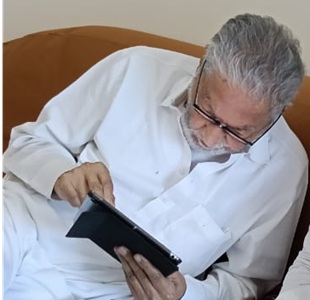For the past several winters, Delhi has drawn global attention for its life-threatening smog levels. This is attributed, in part, to the open burning of biomass residues like paddy straw and stubble in the neighbouring states of Punjab and Haryana.
Ironically, while these residues can contribute to lethal levels of air pollution when burnt, they can in fact reduce air pollution if converted to biomass-based fuels. So, with a no-brainer solution to the capital’s annual problem, what has held back its implementation?
The biofuels story so far in India has been pretty underwhelming, despite commendable efforts initiated by the government over the last decade and a half.
The Ethanol Blended Petrol Programme (EBP), launched in 2003, aimed at promoting five per cent blending of molasses-based ethanol with petrol. In 2008, the EBP further pushed the blending target to 10 per cent and allowed production from sugarcane juice as well.
The National Biodiesel Mission, formed by the Planning Commission in 2003, proposed a two-phase strategy for biodiesel production from jatropha seeds to achieve a 10 per cent blending mandate with diesel by 2012.
Despite underachieving these blending targets, in 2009, the National Biofuels Policy set another ambitious target of 20 per cent blending for both ethanol and biodiesel by 2017. Today, we stand at best at a national average of 2.5 per cent ethanol and 0.5 per cent biodiesel blends.
The failure to achieve blending targets can be attributed to myriad reasons. The primary cause is the lack of an efficient and reliable supply chain. Biomass, which typically refers to plants, crop residues and organic wastes, comes in varying sizes and shapes, making transportation unwieldy and difficult to standardise as a process.
The fact that the quality of biomass varies with the type of crop adds to the difficulty of standardisation. Most crops and their residues are available on a seasonal basis and cannot be stored for long because they will rot. Even though biofuels have the potential to be carbon neutral, this is rarely achieved. Untreated raw biomass has a medium-to-low energy density, so the energy requirement for handling, transportation and processing trumps the energy content in the fuel — making it a net emitter of carbon dioxide.
The need of the hour is a technology that can convert and compress biomass into a lighter, energy-dense solid, with a low moisture content and higher resistance to weather conditions. Torrefaction, if implemented properly, can be an apt solution.
Torrefaction is the process of slow heating or roasting of biomass in limited oxygen, to degrade the hemicellulose (which is the component of biomass responsible for its fibrous and unwieldy nature). This process releases moisture and some of the more volatile gases, thereby reducing the mass and volume but retaining most of the energy content.
Torrefied biomass is easy to transport and has attributes similar to high quality coal-high energy content, low ash and moisture content and higher resistance to weather conditions. In fact, it has a significant advantage over high quality coal — it is a clean and a renewable resource.
Torrefied biomass could also be a good option for producing methanol. The government, advised by NITI Aayog, is interested in exploring the possibility of using methanol as an alternative fuel in India. Globally, the well-established technologies for methanol production use either natural gas or coal as the starting point.
Considering that India does not have sufficient indigenous natural gas reserves and that coal is a greenhouse gas nightmare, torrefied biomass could be a promising resource option. It can directly gel with the existing coal-to-methanol technologies.
Torrefied biomass also has the potential to produce compressed natural gas (bio-CNG) and biodiesel much better than raw biomass, because of the improved supply chain and lowered carbon emissions. These fuels use crop residues and wastes as feedstock for torrefaction, thereby relieving us from the food-versus-fuel conundrum.
There is, however, a catch. While torrefaction is a proven technology at a pilot scale, there are no large-scale commercial units yet that deal with all types of biomass residues. This is due to the lack of supporting mechanisms, both financial and infrastructural.
If the government can prioritise the set-up of a torrefaction demonstration plant, it would encourage investors to help carry this technology forward to commercialisation. With a robust biomass supply chain based on decentralised torrefaction units, the subsequent steps in the biofuels production process could easily fall into place.
Creating a well-oiled biomass supply chain machinery will, in turn, create a demand for straw and stubble residues, making it more profitable for farmers to sell rather than burn them. The proposed strategy is in the interest of farmer welfare, critical to air quality improvement and could present a major success story for biofuels in India.
(Ramya Natarajan is Senior Research Engineer at the Center for Study of Science, Technology and Policy [CSTEP], a technology policy think tank. The views expressed are those of CSTEP. The author can be contacted at ramya.n@cstep.in)
—IANS






0 Comments